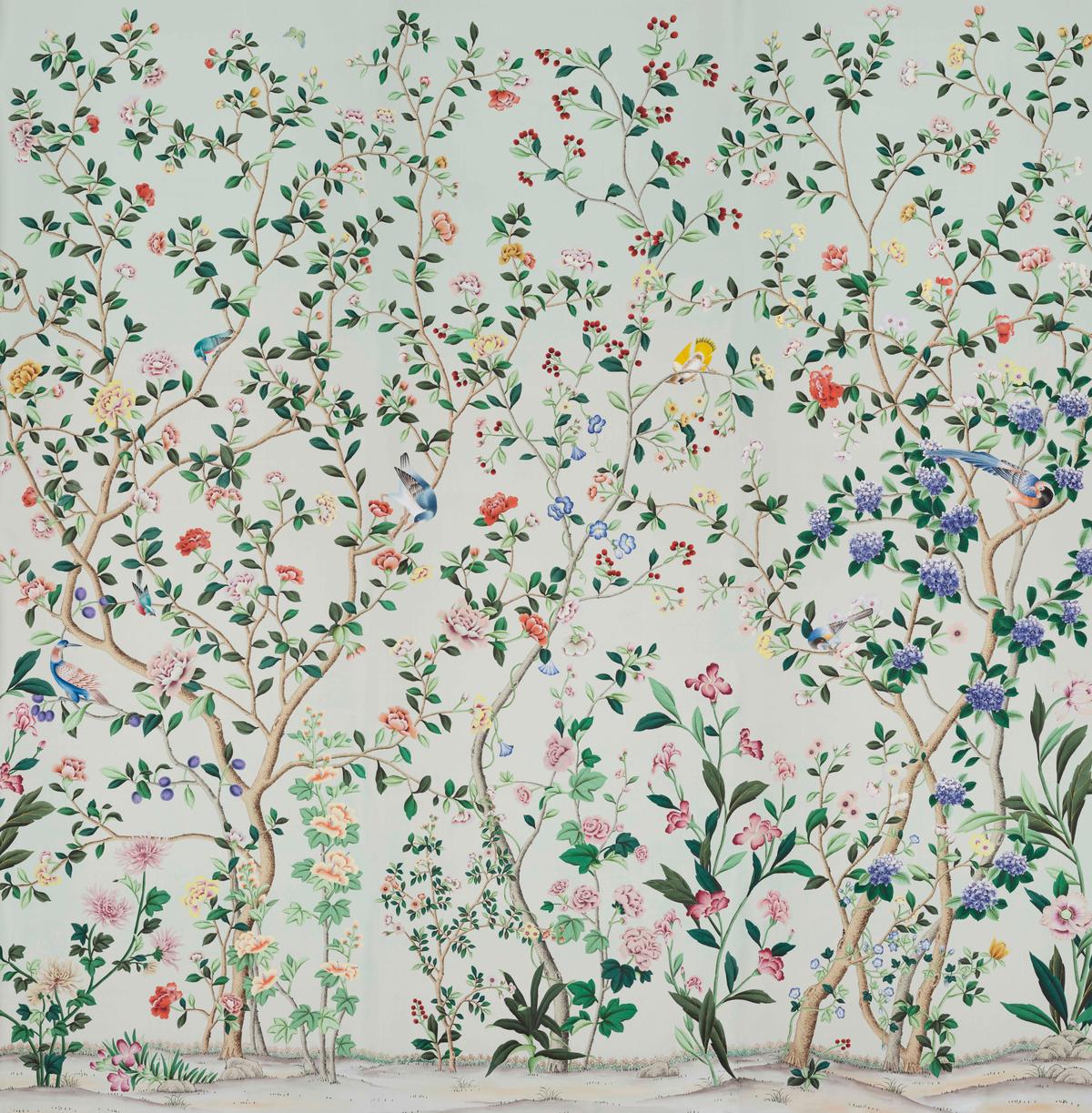With the right decor, a room can be an experience, breathtaking and transportive. The master artisans at de Gournay, the world-famous British luxury interiors company, delight in curating these experiences. Delivering exquisitely hand-painted, custom-made wallpapers that fit a room like a couture dress, they’re reviving a pre-industrial Chinese art form—the laborious process that produces the world’s most beautiful and evocative wallpapers.

"Erdem" on Adam Grey dyed silk. Courtesy of de Gournay





